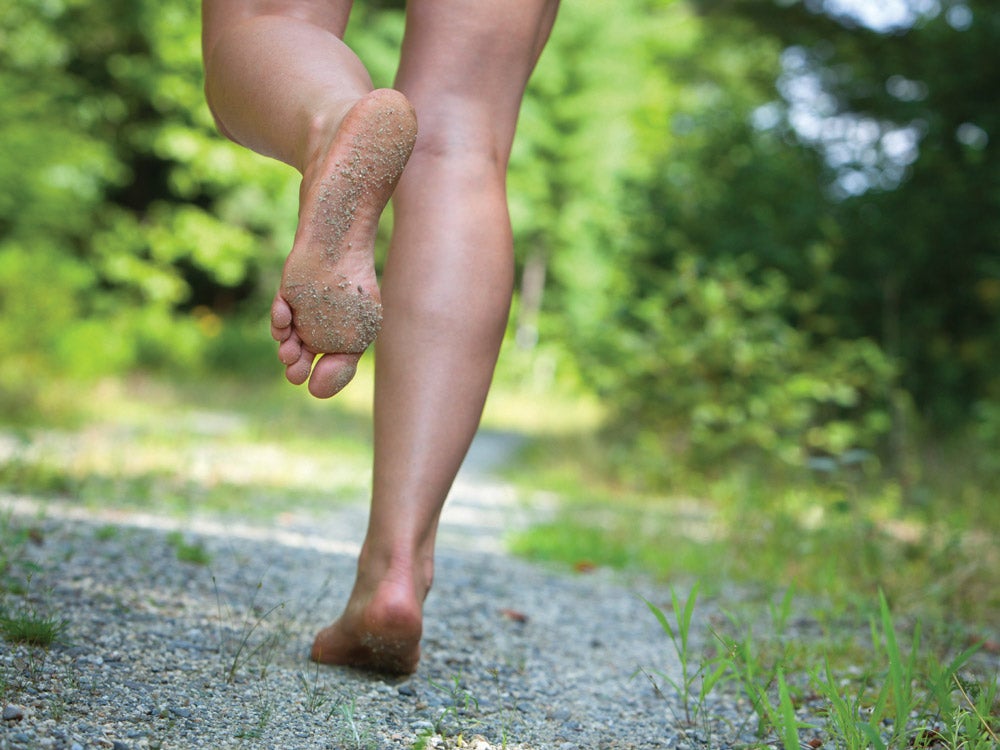Forget The Fads: Not All Running Tips Are True

The quick, trendy route to better performance seems more appealing than the long, traditional one, but you can’t shortcut your way to lasting results. Our thoughts on running fads to ignore, along with some timeless advice on maximizing your triathlon run performance:
Finding The Perfect Shoe
2011’s Born to Run started the barefoot and minimalist shoe movement, with believers scoffing at “traditional” running shoes.
The truth: Minimalist shoes could work for you if you’re a healthy, lighter runner. But be cautious. Going from thicker-heeled shoes to minimalist versions can wreak havoc on your lower-leg muscles. If you’re a longtime injury-free runner, start with drills and short runs in minimal models before completely converting.
The Perfect Cadence
The idea that cadence is key to performance gains began with research by coach Jack Daniels at the 1984 Olympics. He found that most of the runners—who were all clearly fast and efficient—averaged around 180 steps per minute. That has led to the belief that you can boost your running by simply increasing your steps per minute.
The truth: A slower cadence means longer, possibly higher strides, which can put you more at risk for injury because of the increased impact. One recent study by researcher Bryan C. Heiderscheit concluded that subtle increases in step rate can substantially reduce the loading to the hip and knee joints and may help prevent common running-related injuries. While you might want to consider modifications to your technique, the idea that cadence is the most important key to success is dubious.
RELATED: The Glutes: Your Biggest Asset
Foot Strike
As related to the minimalist trend, newer models of running shoes emphasize a lower heel height to promote a more mid-foot or “natural” foot strike.
The truth: Studies have shown that elite long-distance triathletes and runners (longer than 10K) often naturally switch from a mid-foot to heel strike as the distances grow longer. In fact, former world marathon record holder Haile Gebrselassie purposefully switched to heel striking en route to becoming a sub-2:04 marathoner. When these same athletes are running shorter races or sprinting to the finish, they tend to naturally switch to a mid-foot strike. Avoid an aggressive heel strike—which puts the brakes on your stride—and work on getting your feet to fall under your hips.
RELATED: The Most Important Run Workouts For Triathletes
Advice To Trust
Although there are no quick fixes, these are four key components of improving your run split.
Frequency
Many triathletes try to improve running with an overemphasis on the long run and wind up increasing it too quickly, but the key to increasing running durability is frequency. Run frequency is achieved by first (gradually) stringing a number of short and easy runs together over many weeks, then slowly adding time, and finally adding in intensity where appropriate.
Specificity
If your goal is to run fast off the bike, then you need to practice running fast off the bike—frequently and with good form. The tricky part is finding the right way to insert specificity without breaking yourself down too much, maintaining frequency, and not “racing” in practice.
Consistency
Boring warning! It takes years of consistency to improve. Establish a routine that you can repeat for a long period of time. Running 20 miles a week divided into five runs is better than running 20 miles a week divided into two or three runs. In the same vein, running 20 miles a week 50 weeks a year is better than running 40 miles a week with big chunks of time off.
Specific Strength And Flexibility
Addressing key limiters in strength and flexibility can help to improve your form naturally. Determine your weaknesses—muscle imbalances in your hip flexors or inflexible hamstrings, for example—with a coach or through video analysis and focus on improving them to avoid injury and increase efficiency.
RELATED: The Running Gait Debate
Follow Triathlete on Twitter @Triathletemag for inspiration, new workout ideas, gear reviews from our editors and more.